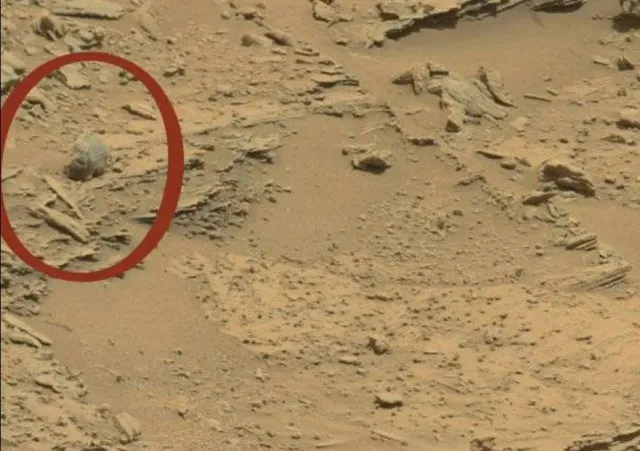NASA scientists are investigating a mysterious skull-shaped formation spotted by the Perseverance rover on Mars.
It sparked debate about its origins and possible cosmic connections.
NASA discovers skull-shaped rock formation on Witch Hazel Hill, Mars
NASA’s Perseverance rover recently captured an unusual dark rock formation on Mars.

The structure, spotted while descending Witch Hazel Hill in the Jezero Crater basin, resembles a skull.
Its dark surface and small pits make it stand out sharply against the lighter Martian terrain.
The feature has since been nicknamed “Skull Hill.”
Scientists are intrigued by its irregular appearance and composition.
It sharply differs from other nearby geological features on the ridge.
Skull Hill’s unusual texture and color raise question about its origins

The rock’s angular surface and pitted features hint at either wind erosion or impact-based displacement from another location, possibly far from where it now rests.
Margaret Deahn, a Ph.D. student at Purdue University.
Additionally, she also noted that Skull Hill’s texture is highly contrasting and may indicate a floating rock moved by natural Martian forces.
Margaret Deahn, a Ph.D. student at Purdue University, wrote in a post on the NASA website: “This float rock uniquely contrasts the surrounding light-toned outcrop with its dark tone and angular surface, and it features a few pits in the rock.
“If you look closely, you might even spot spherules within the surrounding regolith! See “The pits on Skull Hill may have formed via the erosion of clasts from the rock or scouring by wind”
Her analysis, published on NASA’s official blog.
It highlights tiny spherules around the rock that may have formed through erosion or volcanic activity.

NASA scientists explore the possibility of meteorite origins
Some researchers believe Skull Hill could be a meteorite due to its dark coloration.
This feature is similar to meteorites previously found by the Curiosity rover in Gale Crater.
However, new data from the SuperCam instrument challenges that idea.
The chemical composition doesn’t match the iron-nickel makeup of typical Martian meteorites.

Margaret added: “Skull Hill’s dark color is reminiscent of meteorites found in Gale crater by the Curiosity rover… Chemical composition is an important factor in identifying a meteorite, and Gale’s meteorites contain significant amounts of iron and nickel.
“However, recent analysis of SuperCam data from nearby similar rocks suggests a composition inconsistent with a meteorite origin.”
Further tests will determine the rock’s chemical makeup using Perseverance’s onboard instruments.
It helped scientists uncover the true nature of this mysterious object.
NASA continues broader search for evidence of life beyond Earth
This discovery comes amid other exciting developments in space science, including evidence of potential life-related gases on the exoplanet K2-18b in the Leo constellation.
NASA’s James Webb Space Telescope has detected methane, carbon dioxide, and dimethyl sulfide on K2-18b, a planet 2.6 times the size of Earth.
These gases could be potential indicators of biological activity.
Professor Nikku Madhusudhan explained, “There is no known mechanism that can explain this chemical combination without involving biological life.”